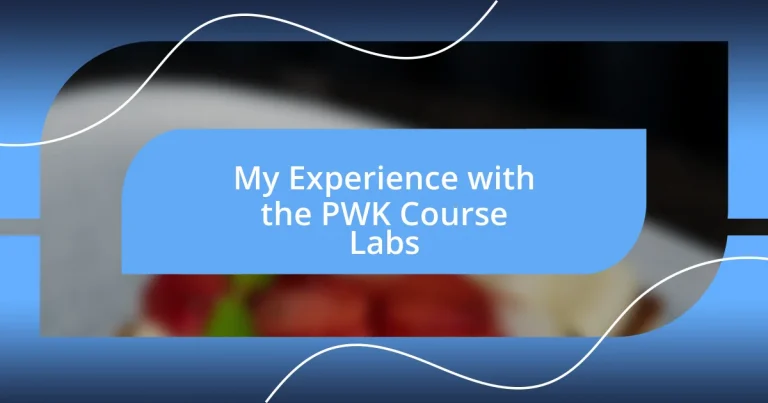Key takeaways:
- The PWK course emphasizes practical application and critical thinking, encouraging students to adopt an attacker’s mindset while being ethically aware of their skills.
- Setting up a structured lab environment and utilizing tools like virtualization software significantly enhances the learning experience, allowing for effective experimentation and focus.
- Overcoming challenges such as time management, information overload, and unexpected errors fosters resilience and reinforces problem-solving skills essential for success in penetration testing.
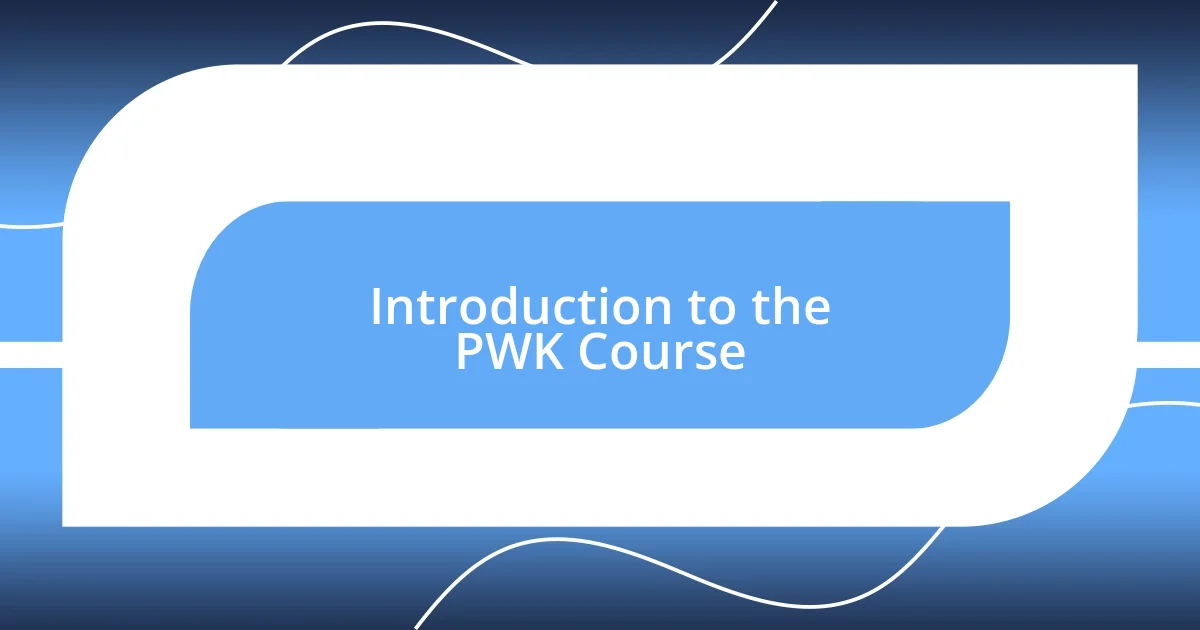
Introduction to the PWK Course
The PWK (Penetration Testing with Kali Linux) course is truly a gateway into the exciting realm of ethical hacking. I remember my first encounter with it; I was both apprehensive and exhilarated at the prospect of diving into the world of penetration testing. Have you ever felt that rush of curiosity mixed with a hint of fear when facing something new? That’s exactly how I felt as I embarked on this journey.
As I delved into the labs, each module became a new adventure, offering hands-on experience that was both challenging and rewarding. The course not only teaches the technical skills needed but also encourages a mindset shift; it’s about thinking like an attacker to better defend against potential threats. I often found myself reflecting on the ethical implications of hacking—how crucial it is to understand the responsibility that comes with these skills.
One of the standout aspects of the PWK course is its emphasis on practical application. Working through the labs, I felt like a detective, piecing together clues and unraveling complex problems. Isn’t it fascinating how each exercise not only builds your knowledge but also your confidence? It becomes clear that this course isn’t just about learning tools; it’s about fostering a deeper understanding of cybersecurity as a whole.
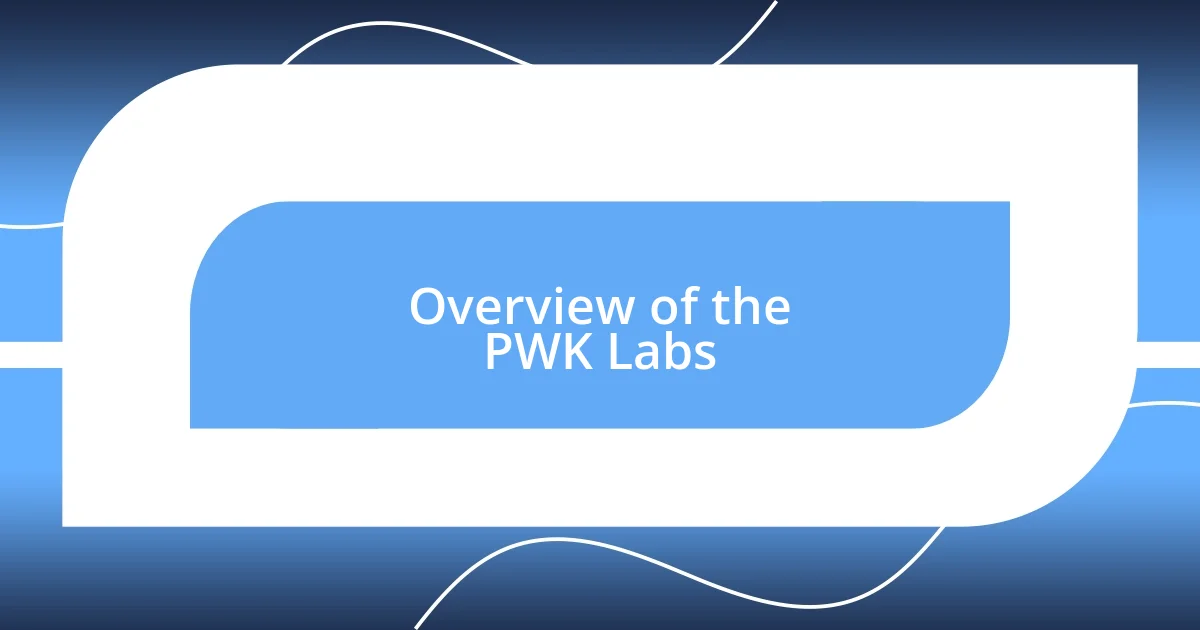
Overview of the PWK Labs
The PWK labs are a critical component of the learning experience, immersing you in real-world scenarios that mimic the challenges faced by professional penetration testers. Each lab is carefully designed to foster not only technical proficiency but also creative problem-solving skills. As I navigated through the various challenges, I often found myself in deep thought, trying to predict how an adversary might exploit vulnerabilities—an exercise that sharpened my analytical skills immensely.
Here are some key highlights of the PWK labs:
- Hands-On Experience: Each lab presents distinct challenges, reinforcing theoretical concepts with practical applications.
- Diverse Scenarios: From web application security to network pentesting, the labs cover a wide range of topics, ensuring a well-rounded learning experience.
- Immediate Feedback: After completing tasks, the instant feedback provided crucial insights into my performance, guiding my improvements.
- Community Aspect: Engaging with fellow students in the discussion forums added a collaborative element that enhanced my learning journey, breaking the isolation often felt when tackling complex problems alone.
- Mindset Development: The labs emphasized critical thinking and adaptability, essential traits for a successful penetration tester.
I vividly remember one particular lab where I felt stuck for hours, only to discover a simple oversight in my approach. The thrill of that “aha!” moment was exhilarating, proving to me just how impactful persistence can be. Each challenge seemed to echo this truth: that in the world of cybersecurity, it’s not just about knowing the tools; it’s about mastering the thought processes that make you an effective tester.
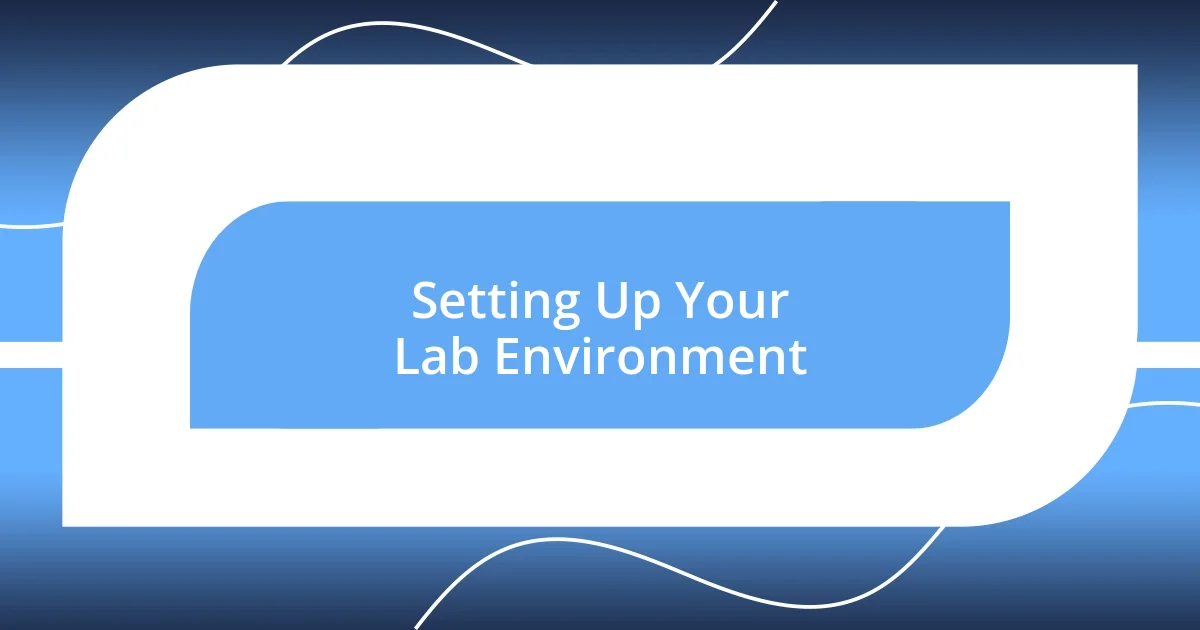
Setting Up Your Lab Environment
Setting up your lab environment is foundational for making the most of the PWK course. In my experience, the right setup can significantly enhance both learning and productivity. I started by allocating a dedicated workspace, free from distractions, which made the immersive experience of the labs much more enjoyable. Have you ever tried to focus on complex tasks in a chaotic environment? It’s tough! A tidy and organized space allows for clearer thinking and better problem-solving.
I recommend using virtualization software, like VMware or VirtualBox, to create isolated lab environments. This setup not only simulates real-world scenarios but also ensures that your primary operating system remains untouched. When I first set everything up, I felt like a kid in a high-tech playground—everything was at my fingertips. Experimenting with different configurations taught me valuable lessons about network segmentation and security controls; it’s fascinating how these principles come alive when you’re hands-on.
To make things easier, I created a checklist of tools and configurations I needed for my lab. This simple yet effective strategy streamlined my process, ensuring that nothing was overlooked. Reflecting on those preparations, I can say that being proactive about setting up your resources offers a solid foundation for tackling the challenges ahead.
| Setup Element | Purpose |
|---|---|
| Virtualization Software | Isolate environments, experiment without risk |
| Dedicated Workspace | Minimize distractions, enhance focus |
| Checklist | Ensure all tools are available, maintain organization |
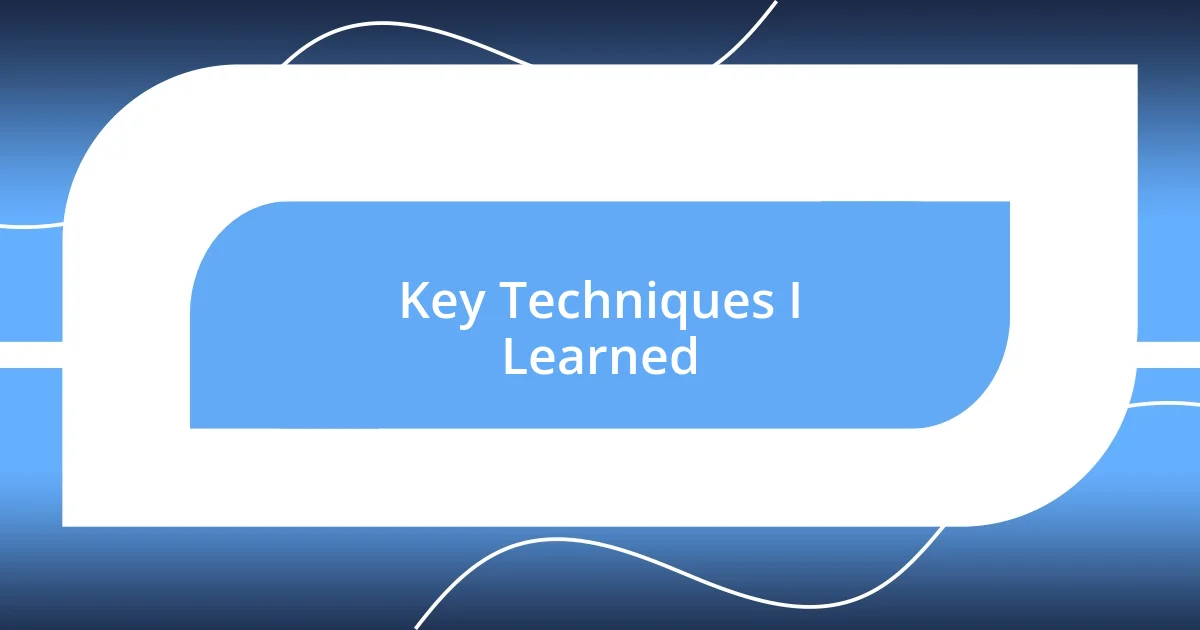
Key Techniques I Learned
In my journey through the PWK labs, one of the key techniques I mastered was vulnerability assessment. I vividly recall a lab where I had to identify weaknesses in an outdated web application. It was thrilling to peel back layers of security and uncover the flaws that could be exploited. This process taught me the importance of meticulous attention to detail. Have you ever scrutinized something so closely that you accidentally stumbled upon insights you never expected? It’s a rewarding experience that strengthens your problem-solving skills.
Another technique that stood out to me was the use of enumeration tools to gather user and service information. I remember the first time I ran Nmap and saw the results flood in—it felt like opening a treasure chest of information. This tool opened my eyes to the wealth of data available and how crucial it is to analyze it effectively. Engaging in this process not only honed my technical abilities but also developed my strategic thinking, as I had to evaluate which points of attack were most viable.
Lastly, scripting became an essential technique for streamlining my tasks. Through trial and error, I learned how to automate repetitive processes. There’s something incredibly satisfying about seeing a script save you hours of manual work. I still remember the moment I executed my first successful script, transforming chaos into order. It made me wonder, what might I have missed without those automation techniques? This lesson emphasized a critical truth: in the fast-paced world of cybersecurity, efficiency can often be your best ally.
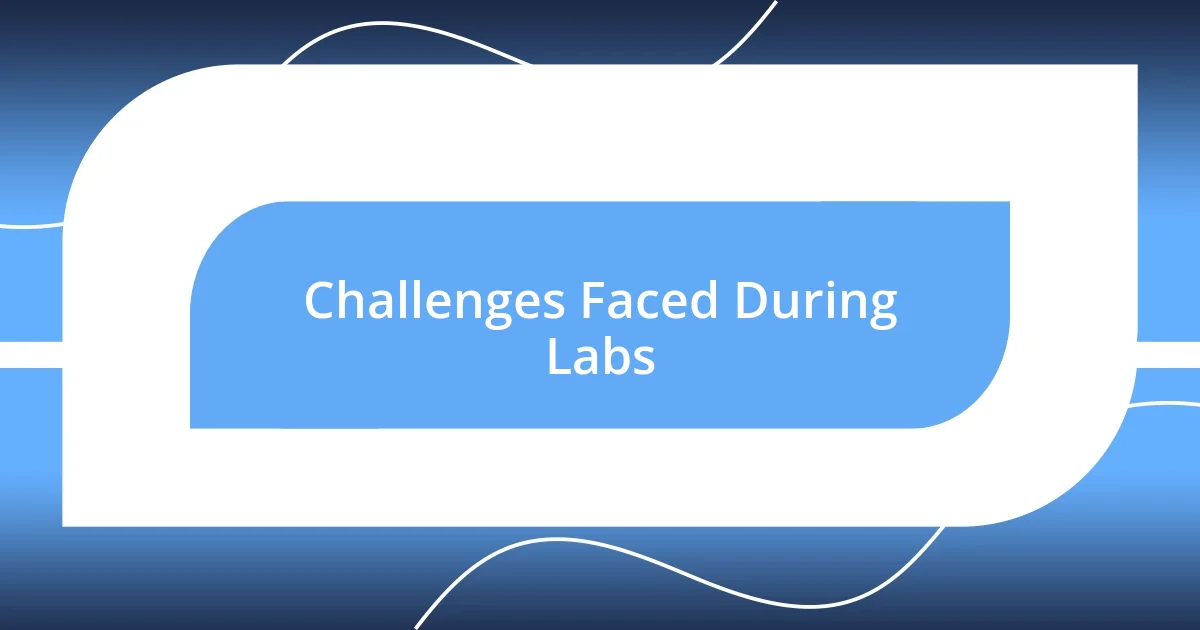
Challenges Faced During Labs
One major challenge I faced during the labs was time management. Initially, I found myself spending far too long on certain tasks, like setting up configurations or debugging code. It felt like I was trying to dig for treasure with a spoon instead of a shovel! What I learned is that prioritizing tasks and setting clear time limits can drastically improve both productivity and focus.
Another obstacle was the overwhelming amount of information. There were moments when I felt lost in the technical jargon and processes. I distinctly remember sitting in front of my screen, staring at a complex guide, thinking, “How am I ever going to get through this?” To tackle this, I started breaking down the information into bite-sized pieces, which made it much more manageable. By summarizing key concepts in my own words, I not only retained information better but also built confidence in my understanding.
Moreover, dealing with unexpected errors during lab exercises tested my patience and problem-solving skills. One time, I spent hours troubleshooting a networking issue that turned out to be a simple misconfiguration. It was frustrating, I won’t lie. Shifting my mindset to view such moments as learning opportunities was crucial. I began to embrace these hurdles, realizing that each error was a stepping stone on the path to becoming a more skilled practitioner. How great does it feel to turn a frustrating situation into a learning moment? It’s empowering!
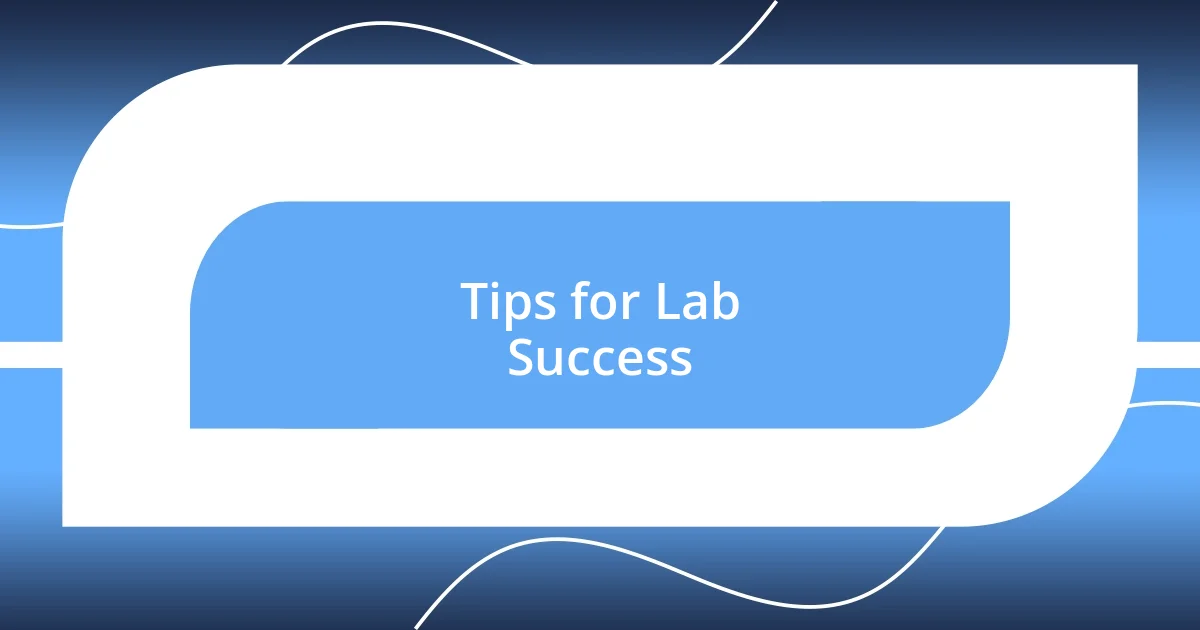
Tips for Lab Success
When aiming for success in the PWK labs, one vital tip I can share is to foster a curious mindset. I remember a particularly challenging lab situation when I hesitated to explore beyond the obvious solutions. It wasn’t until I pushed myself to think outside the box that I discovered a method to exploit an old service vulnerability. Have you ever had an “aha” moment that reshaped your perspective on a task? It’s that moment of inquiry that sparks innovation.
Another strategy that I found invaluable was collaborating with peers. During one lab, I teamed up with a fellow student on a particularly tricky exercise. After a few brainstorming sessions, we managed to piece together insights that neither of us would have reached alone. There’s something about the exchange of ideas that not only eases the burden of difficult tasks but also deepens your understanding of complex concepts. Isn’t it fascinating how sharing knowledge can amplify learning?
Lastly, practice consistently, even if it feels tedious at times. I vividly recall spending a weekend running through various attack scenarios in a simulated environment. Initially, it felt monotonous, but as I began to grasp the underlying patterns, everything clicked. I realized that repetition is not just boring; it’s a powerful tool for retention and mastery. How often do we underestimate the value of practice? Embracing it can truly set the stage for breakthroughs in your learning journey.
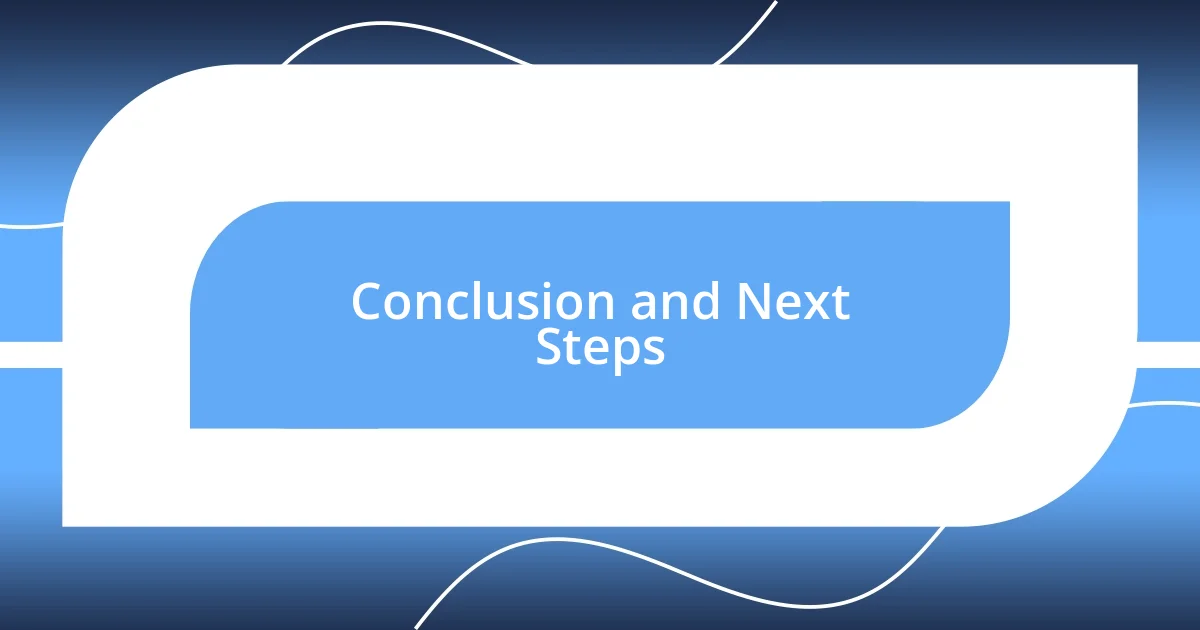
Conclusion and Next Steps
Wrapping up my experience with the PWK course labs has left me reflective about what I’ve learned and where I’m headed next. I genuinely feel that every hurdle I encountered was not just a challenge but a teacher in disguise. This perspective helps me approach future labs with a newfound confidence and eagerness to innovate.
Moving forward, I’m excited to continue expanding my skills through further practice and involvement in study groups. I cannot stress enough how sharing experiences with fellow learners transformed my understanding during the labs. Have you considered how collaboration can enhance your learning journey? I often marvel at the diverse solutions that emerge when like-minded individuals come together, and that’s what I intend to seek out.
Moreover, setting personal goals for each lab session is crucial for my ongoing success. I vividly recall thinking about my short-term objectives during one particularly intensive lab. It helped me maintain focus and motivation when things got tough. Establishing clear, achievable goals not only keeps the momentum going but also makes progress tangible. So, ask yourself, what goals can you set to propel your own learning? The right goals might just be the push you need to reach the next level.












